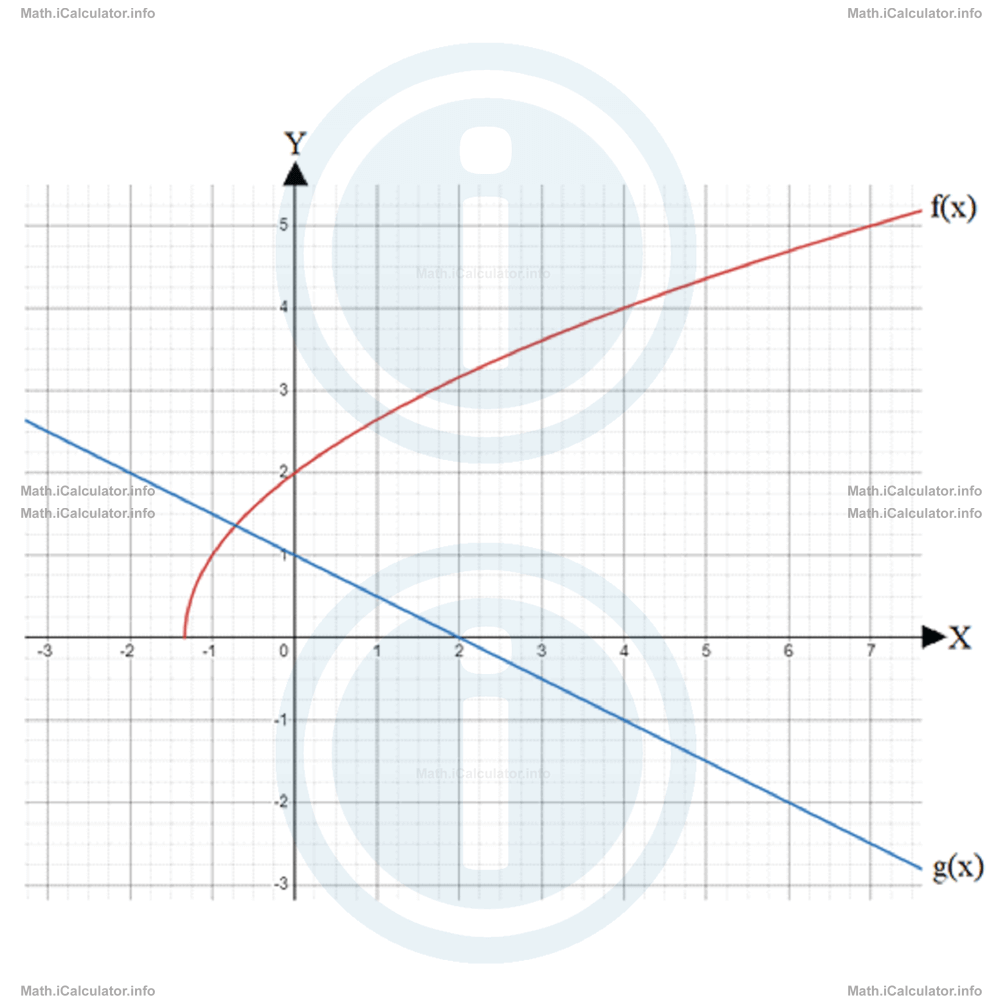Menu
Math Lesson 16.4.6 - Evaluating Composite Functions from a Graph
Please provide a rating, it takes seconds and helps us to keep this resource free for all to use
Welcome to our Math lesson on Evaluating Composite Functions from a Graph, this is the sixth lesson of our suite of math lessons covering the topic of Composite Functions, you can find links to the other lessons within this tutorial and access additional Math learning resources below this lesson.
Evaluating Composite Functions from a Graph
We can find the value of a composite function at a given point even when the individual functions f(x) and g(x) are not explicitly given but only shown on the graph. In this case, we can use the information provided in the graph as a shortcut for finding values of each function or the resulting composite functions without having the need to know the exact formulas of the given functions. When doing this, we must take into account the fact that if the ordered pair (x, y) is a point of the function f(x), then f(x) = y. Given this, we follow the procedure below to calculate f ◦ g(a) for x = a:
- We find g(a) first so that the y-coordinate of g(x) for x = a is identified.
- Then, we find f[g(a)], i.e. the y-value of f(x) that corresponds to g(a).
Let's explain this procedure more in detail through the following example.
Example 5
The figure below shows two functions, f(x) and g(x).

Find:
- g ◦ f(7)
- f ◦ g(4)
Solution 5
- First, we must identify f(7). Looking at the f(x) graph, it is clear that f(7) = 5.
Next, we have to find g[f(7)]. This means identifying g(5) from the graph. Thus, it is easy to see that for x = 5, g(x) = -1.5. Therefore, g(5) = -1.5, i.e. g ◦ f(7) = g(5) = -1.5. - First, we must identify g(4). Looking at the g(x) graph, it is clear that g(4) = -1.
Next, we have to find f[g(4)]. This means identifying f(-1) from the graph. Thus, it is easy to see that for x = -1, f(x) = 1. Therefore, f(-1) = 1, i.e. f ◦ g(4) = f(-1) = 1.
You have reached the end of Math lesson 16.4.6 Evaluating Composite Functions from a Graph. There are 9 lessons in this physics tutorial covering Composite Functions, you can access all the lessons from this tutorial below.
More Composite Functions Lessons and Learning Resources
Whats next?
Enjoy the "Evaluating Composite Functions from a Graph" math lesson? People who liked the "Composite Functions lesson found the following resources useful:
- Graph Feedback. Helps other - Leave a rating for this graph (see below)
- Functions Math tutorial: Composite Functions. Read the Composite Functions math tutorial and build your math knowledge of Functions
- Functions Revision Notes: Composite Functions. Print the notes so you can revise the key points covered in the math tutorial for Composite Functions
- Functions Practice Questions: Composite Functions. Test and improve your knowledge of Composite Functions with example questins and answers
- Check your calculations for Functions questions with our excellent Functions calculators which contain full equations and calculations clearly displayed line by line. See the Functions Calculators by iCalculator™ below.
- Continuing learning functions - read our next math tutorial: Piecewise Functions
Help others Learning Math just like you
Please provide a rating, it takes seconds and helps us to keep this resource free for all to use
We hope you found this Math tutorial "Composite Functions" useful. If you did it would be great if you could spare the time to rate this math tutorial (simply click on the number of stars that match your assessment of this math learning aide) and/or share on social media, this helps us identify popular tutorials and calculators and expand our free learning resources to support our users around the world have free access to expand their knowledge of math and other disciplines.